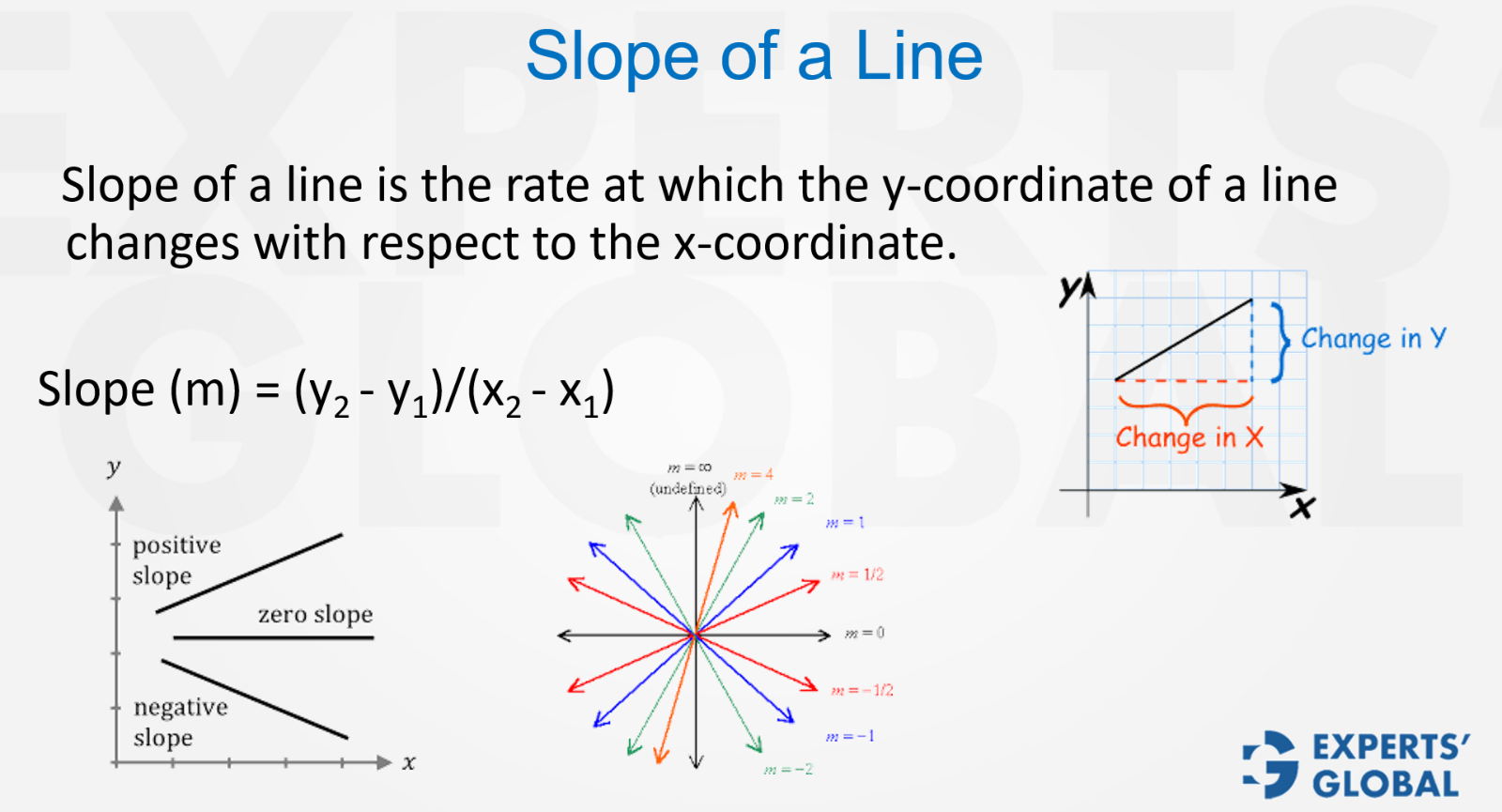Invest 30 seconds...
...for what may lead to a life altering association!
Help Line
- +91.8800.2828.00 (IND)
- 1030-1830 Hrs IST, Mon-Sat
- support@expertsglobal.com
...for what may lead to a life altering association!


Slope measures a line’s rise over run on the coordinate plane: m = (y2 − y1)/(x2 − x1). Example: between points (1, 2) and (4, 8), m = (8 − 2)/(4 − 1) = 6/3 = 2. Positive slope rises left to right in graphs.
The concept of slope is central to understanding lines on a coordinate plane. At its core, slope represents the rate at which a line rises or falls as you move from left to right. It is the ratio of the change in the vertical direction (y) to the change in the horizontal direction (x). A slope of zero means the line is perfectly flat, while a positive slope indicates a rising line and a negative slope shows a falling one. In fact, slope is not just about numbers; it captures direction, steepness, and orientation, making it essential for problem solving in coordinate geometry. This idea often appears in GMAT questions where clarity of interpretation matters more than mechanical calculation. As you continue building your fundamentals, strengthen your understanding of GMAT preparation and also see how mathematical reasoning often plays an unseen role in MBA admissions.

The slope of a line measures its rise or fall. In mathematical terms, slope is the change in the y-coordinate divided by the change in the x-coordinate. For a line passing through two coordinates (x1, y1) and (x2, y2), the formula for slope of the line is:

Slope is more than a mechanical formula. It helps visualize direction, compare rates of change, and understand the steepness of lines. Recognizing slope patterns helps in identifying parallel and perpendicular lines, interpreting graphs, and solving coordinate geometry problems on the GMAT. Mastering slope ensures that when you face coordinate geometry questions, you do not just compute but also interpret relationships with confidence. This clarity is what strengthens your overall preparation and helps you apply reasoning effectively in GMAT practice tests.
Slope is a quiet teacher of progress. It tells you how much you rise for every step you run. In GMAT preparation, choose a positive slope each day: a plan, a timed set, a review. Let small gains build a steady ascent. In the B-school application process, keep the rise aligned with values and the run aligned with deadlines; calibrate essays, recommendations, and achievements so their gradients agree. In life, measure your direction, remove friction, and keep moving when the climb feels slow. The line from where you are to where you hope to be is traced by daily choices.
Keep in touch with all parts of GMAT. Take a free GMAT full-length mock test